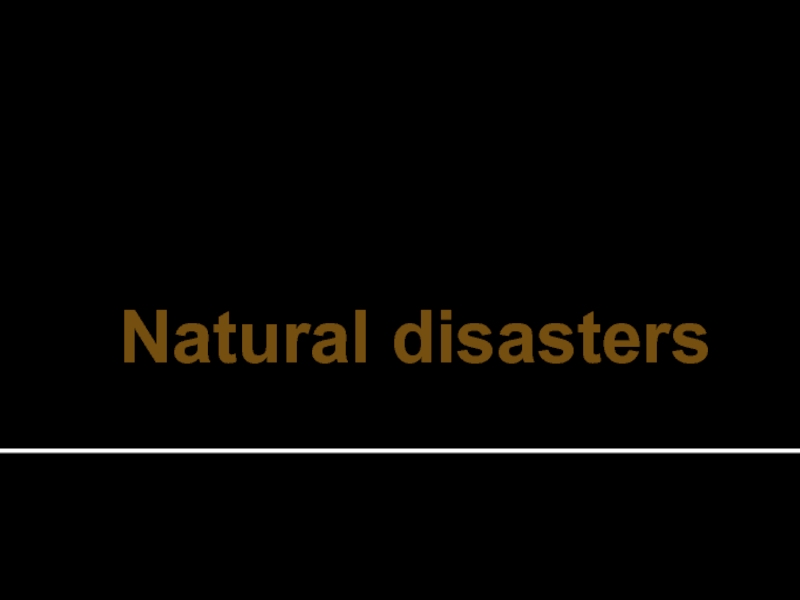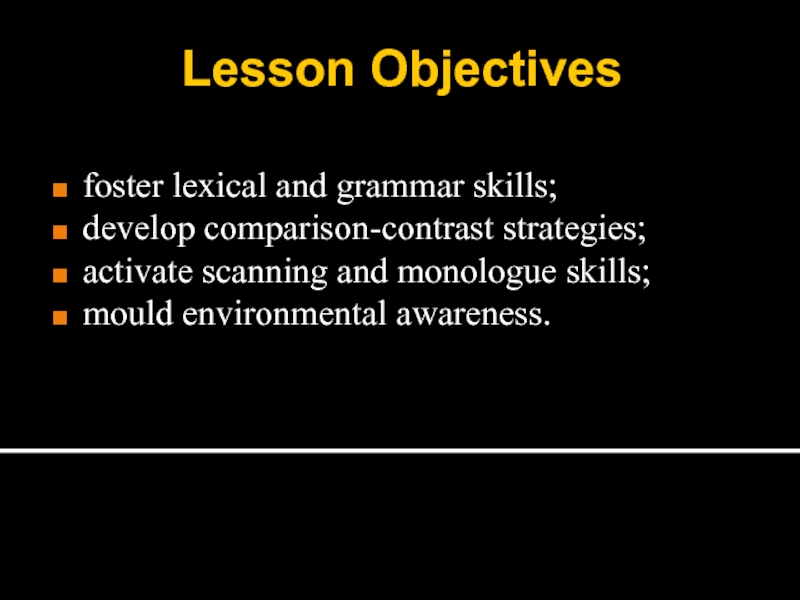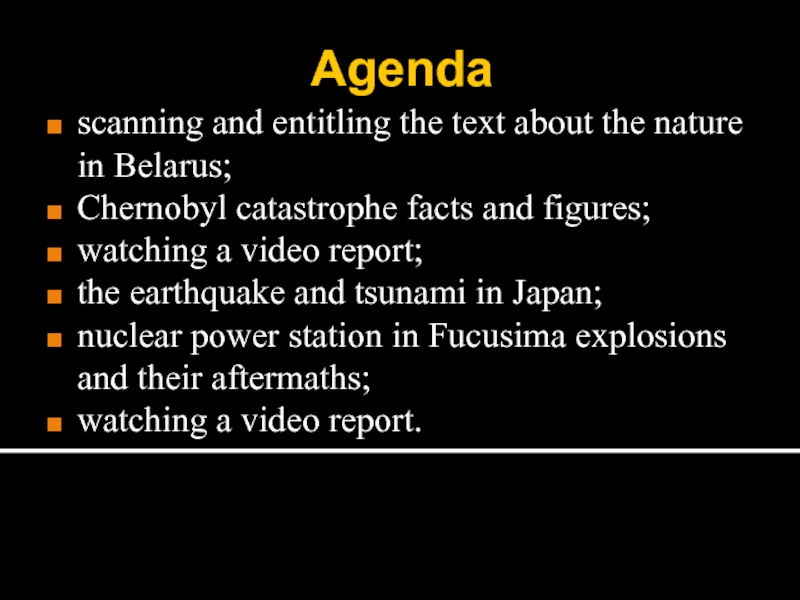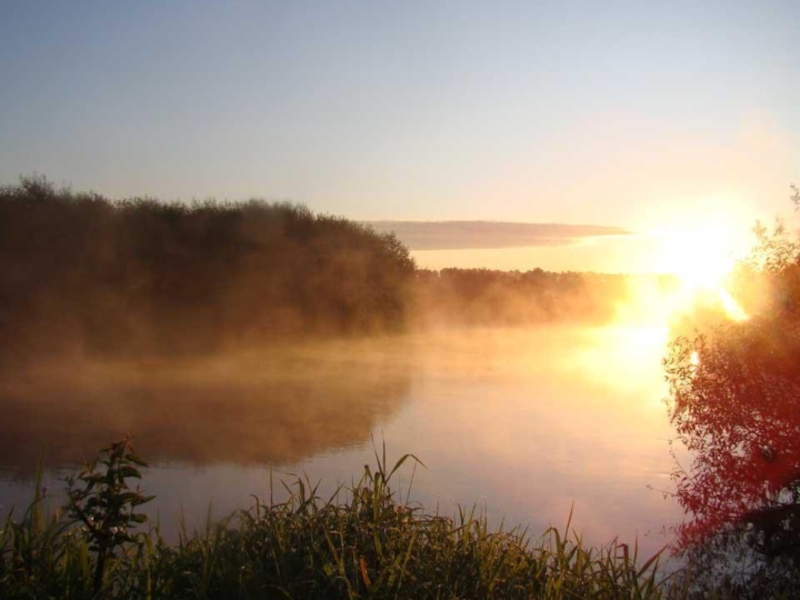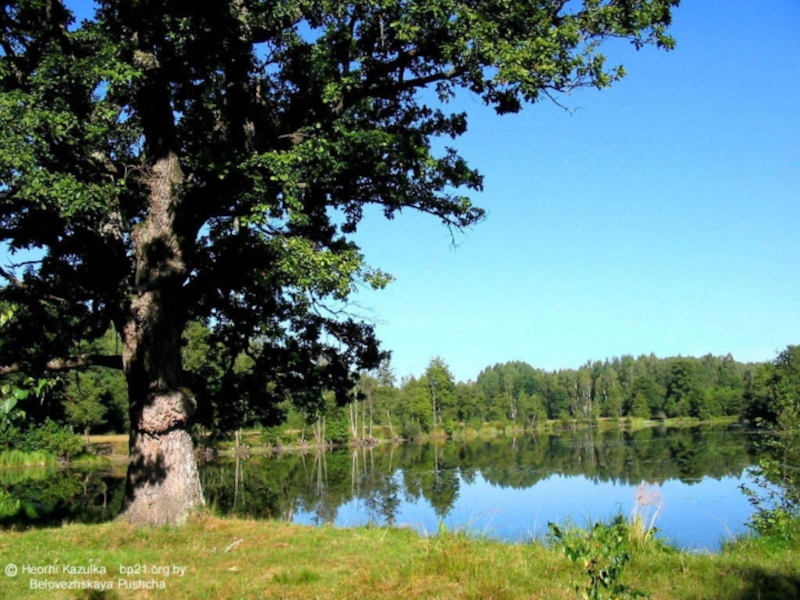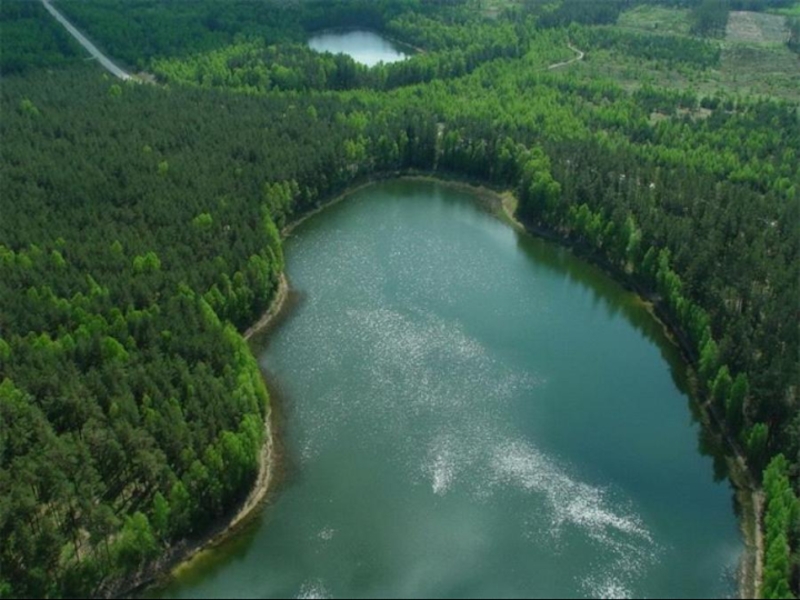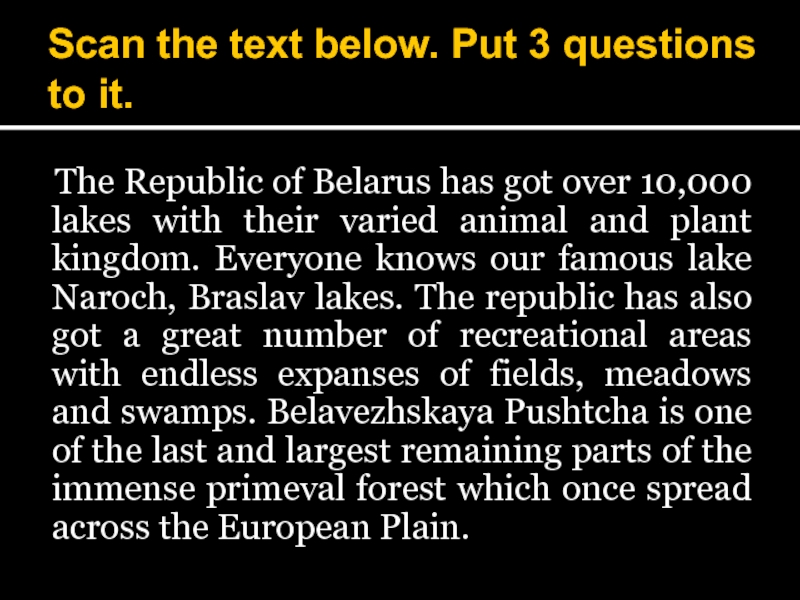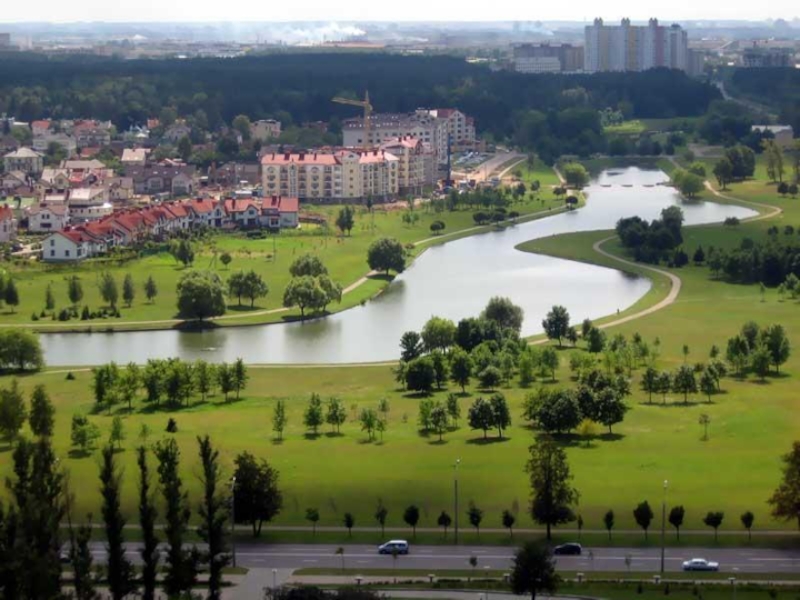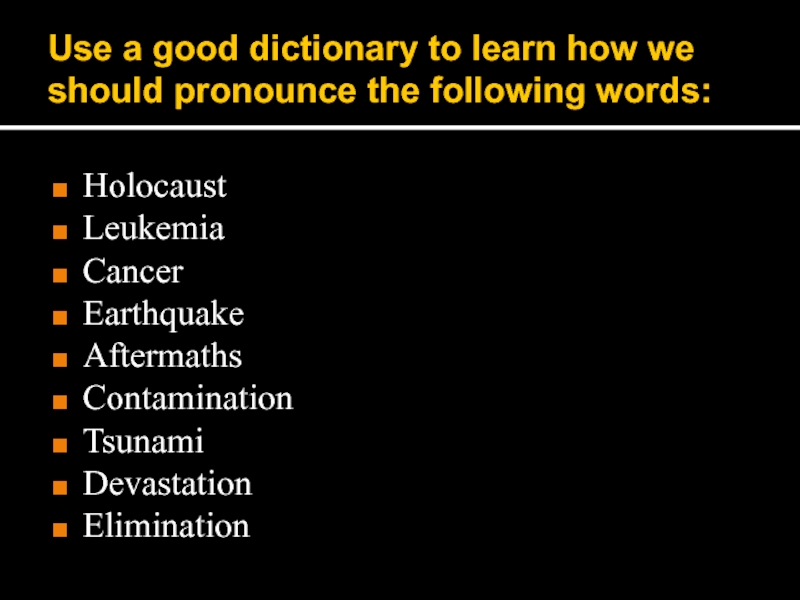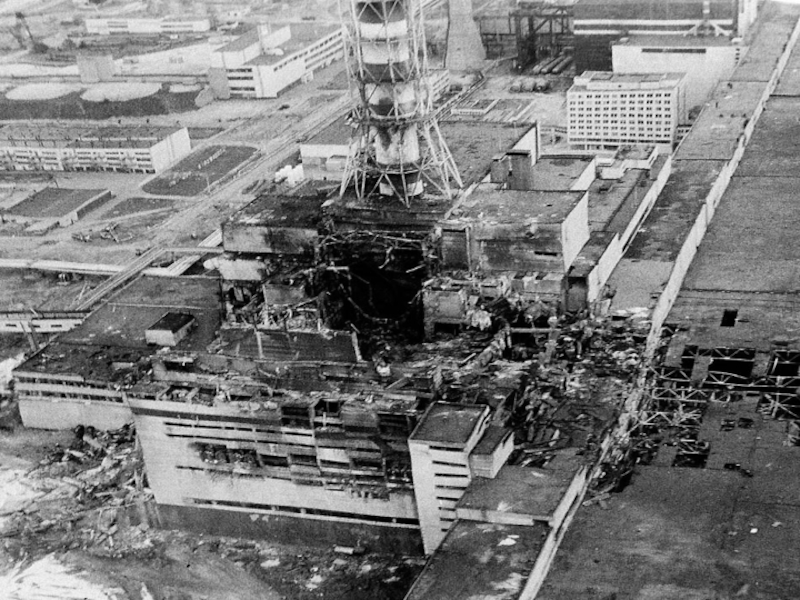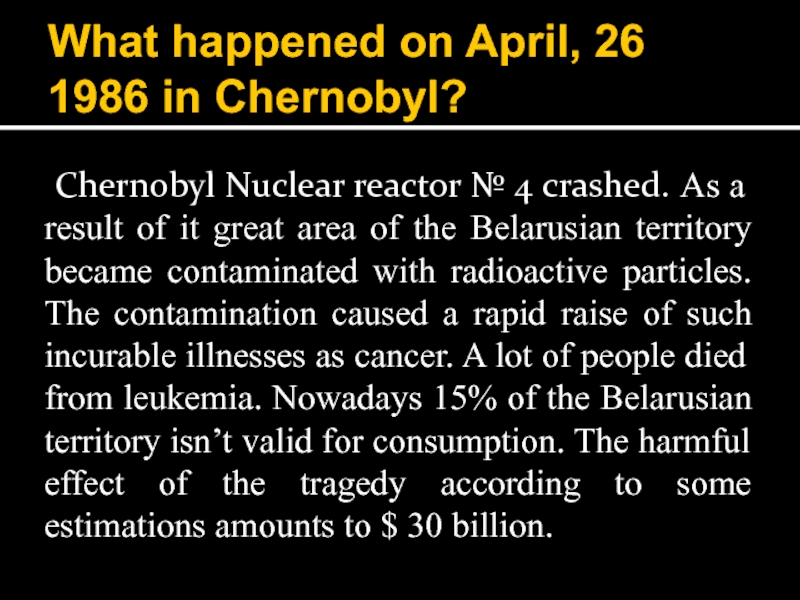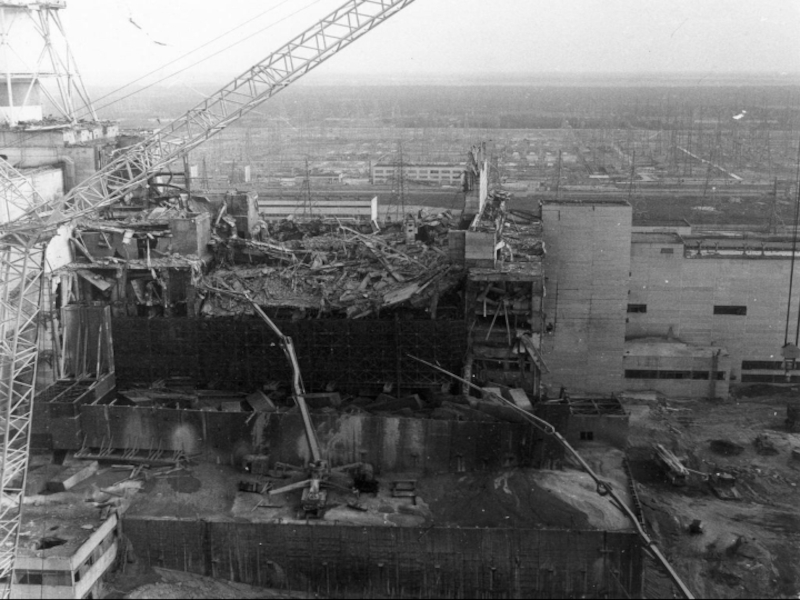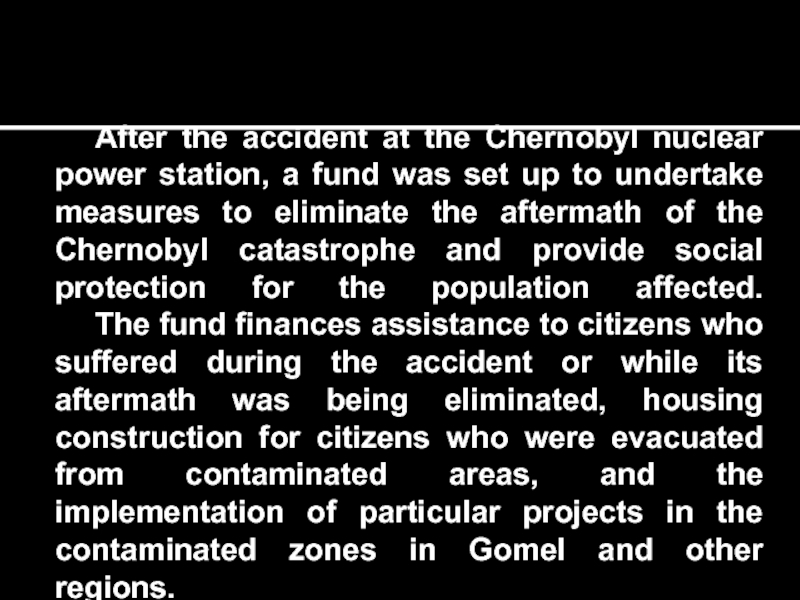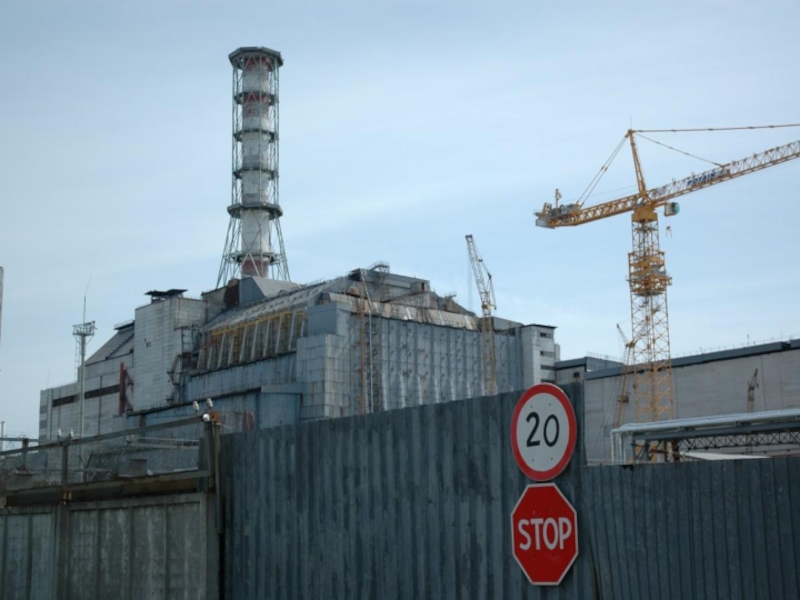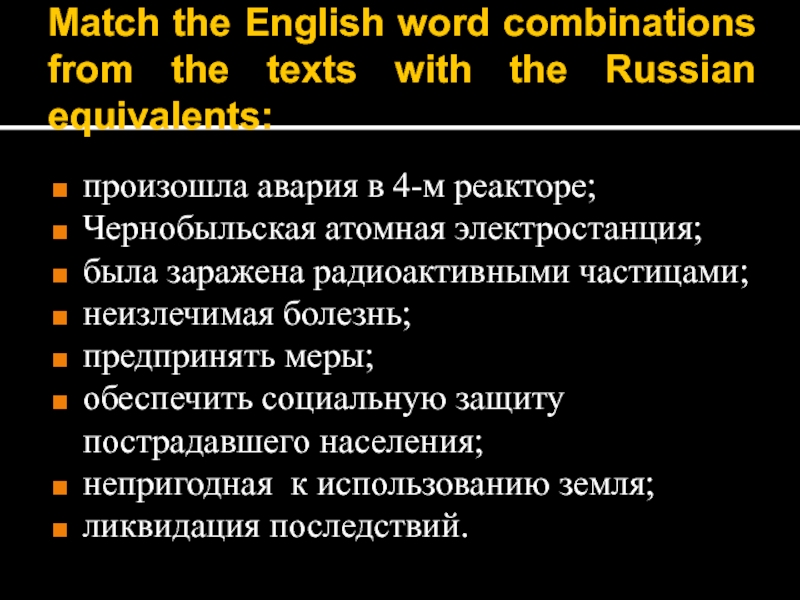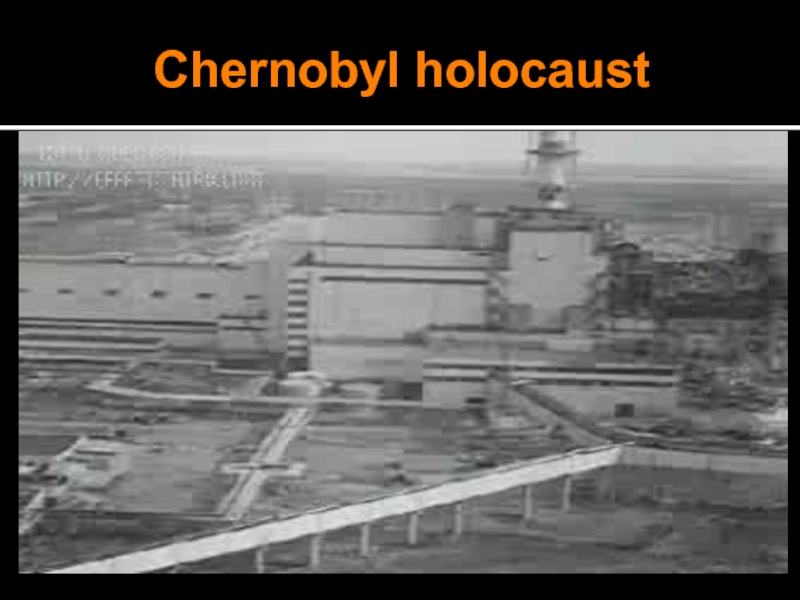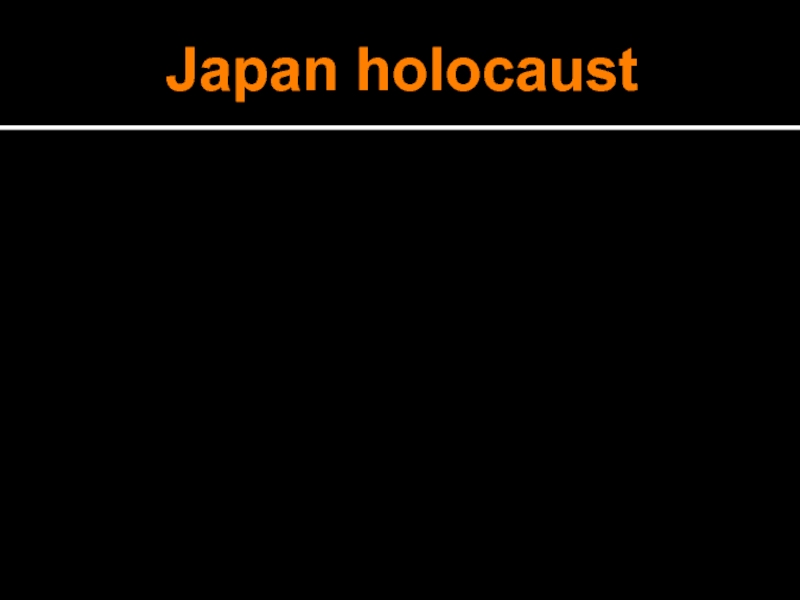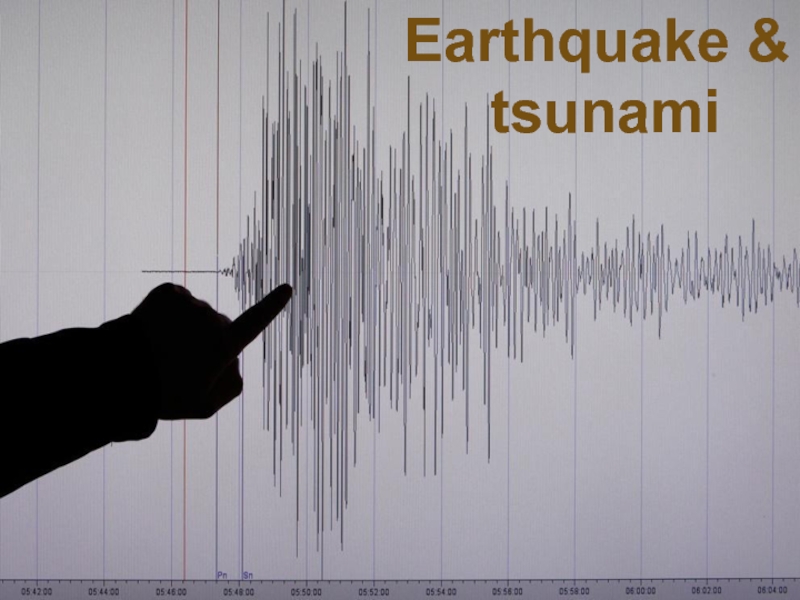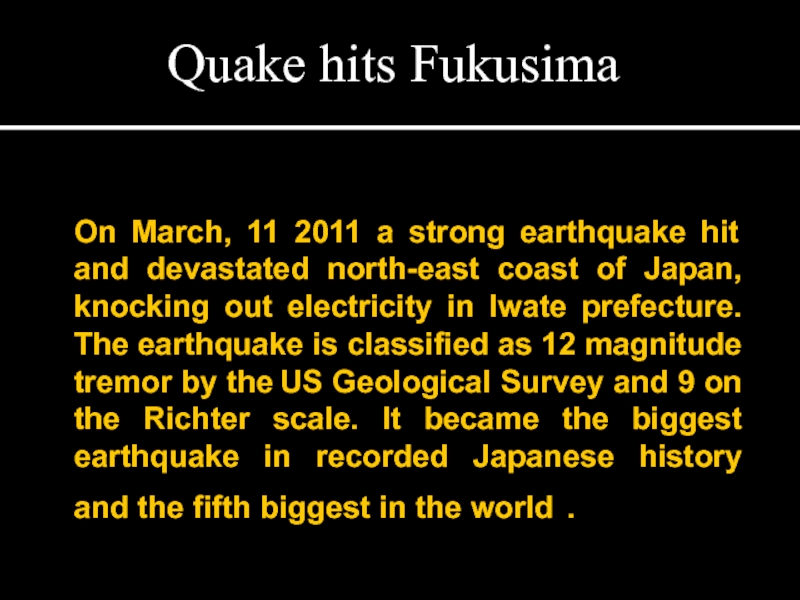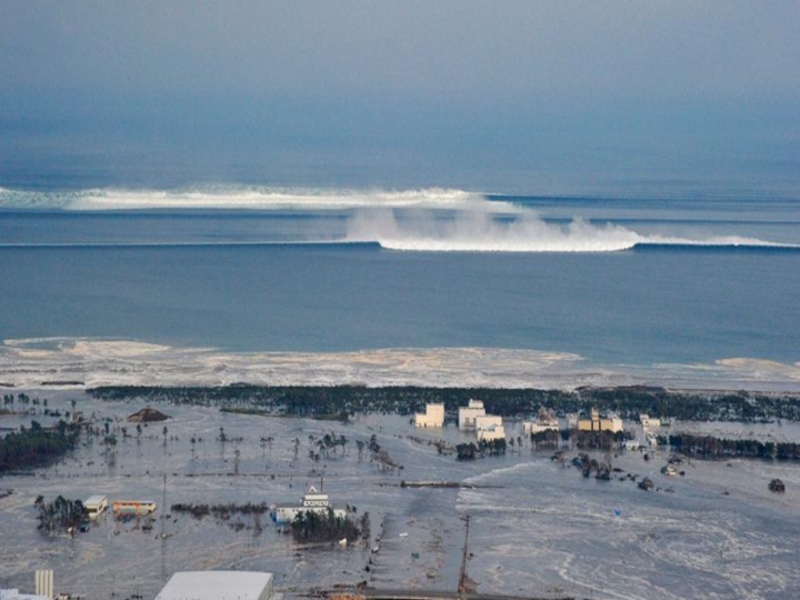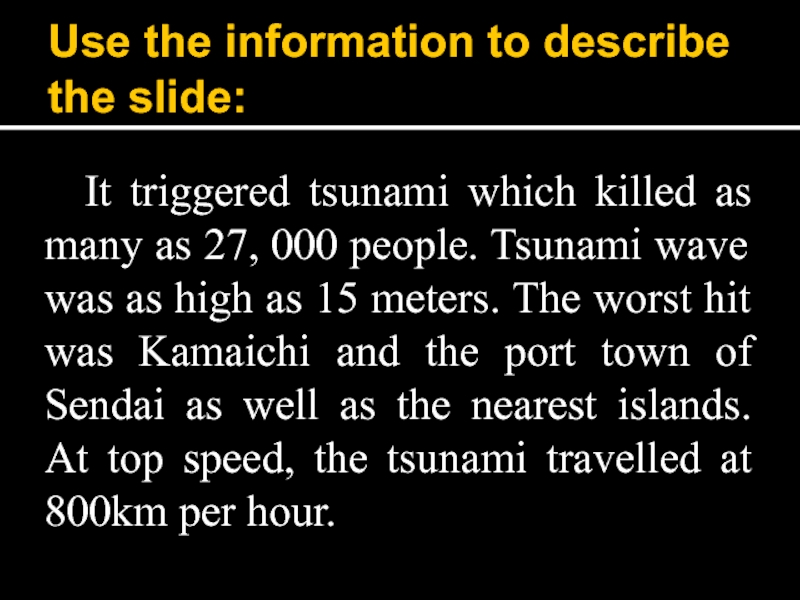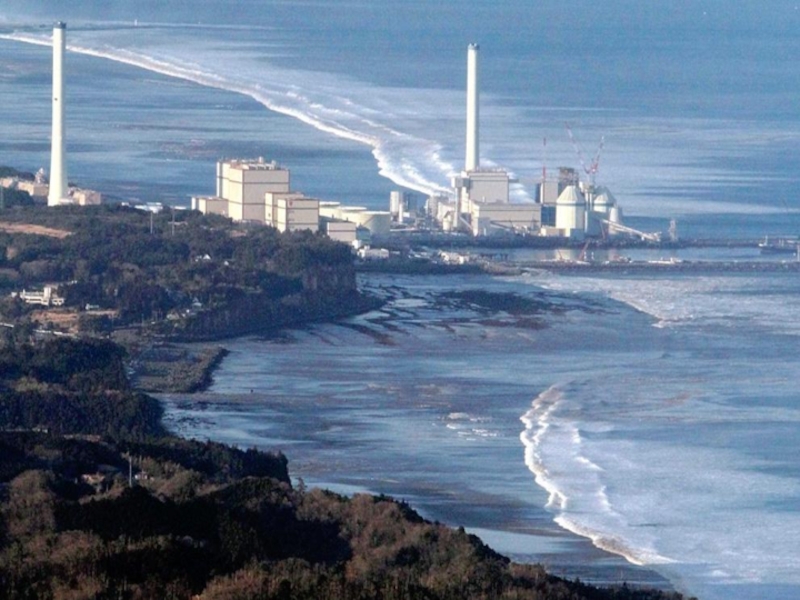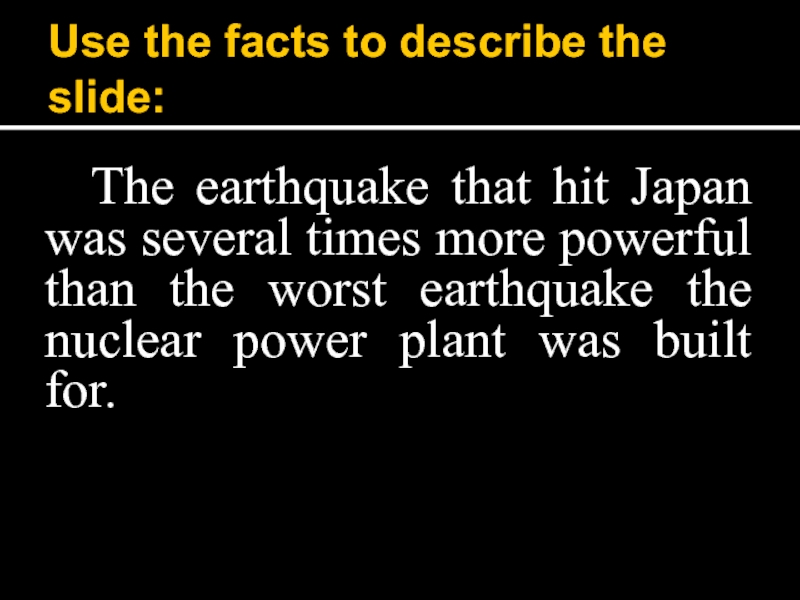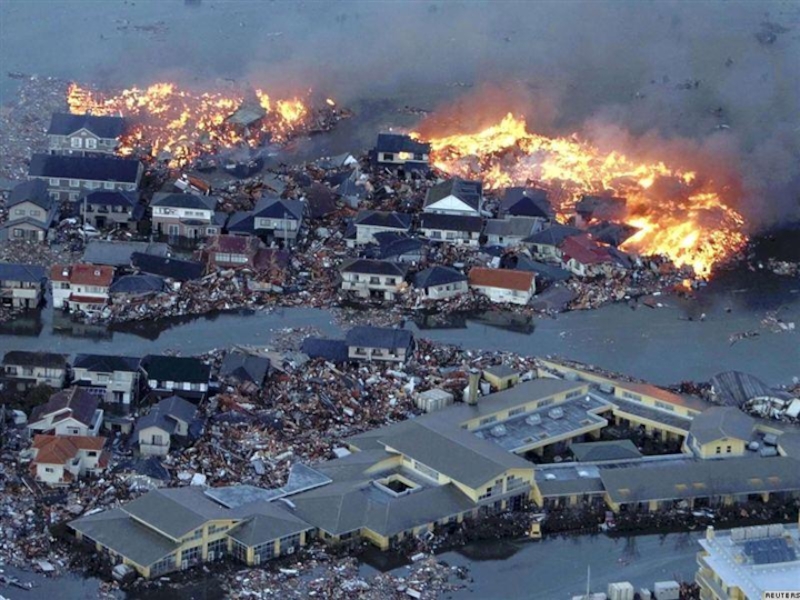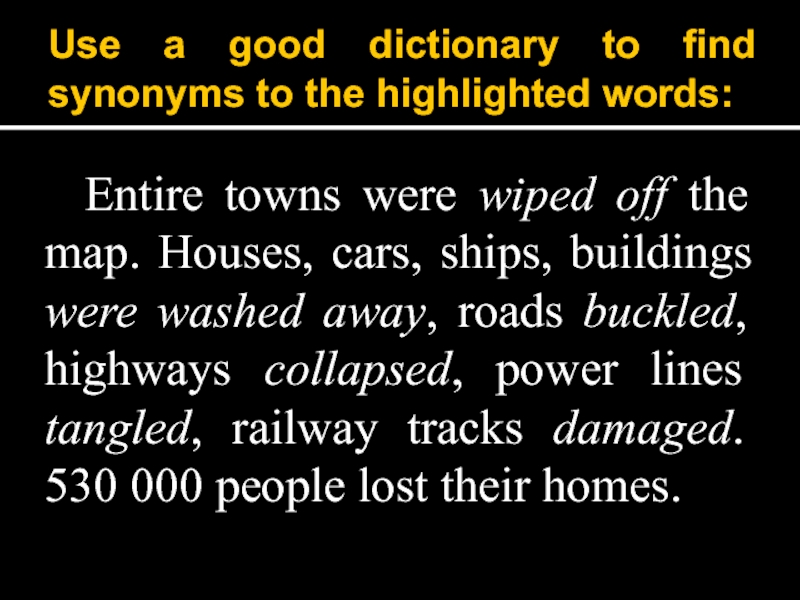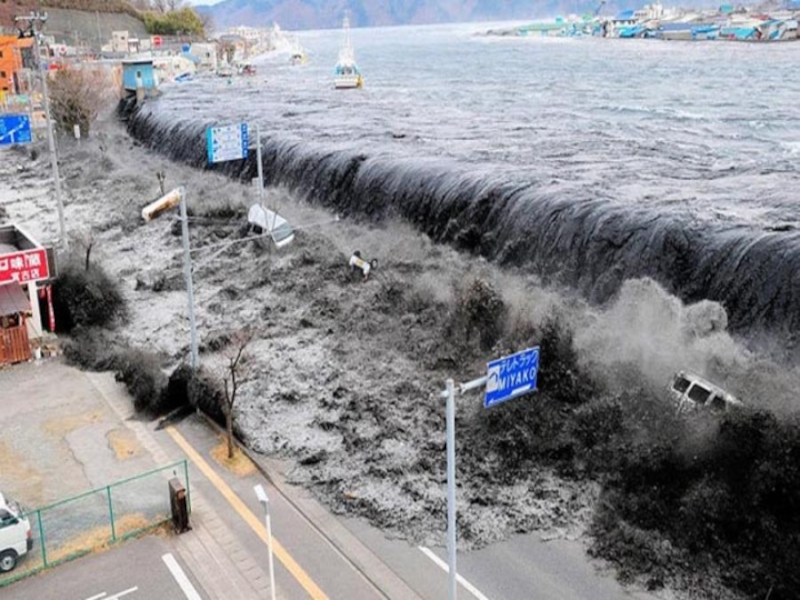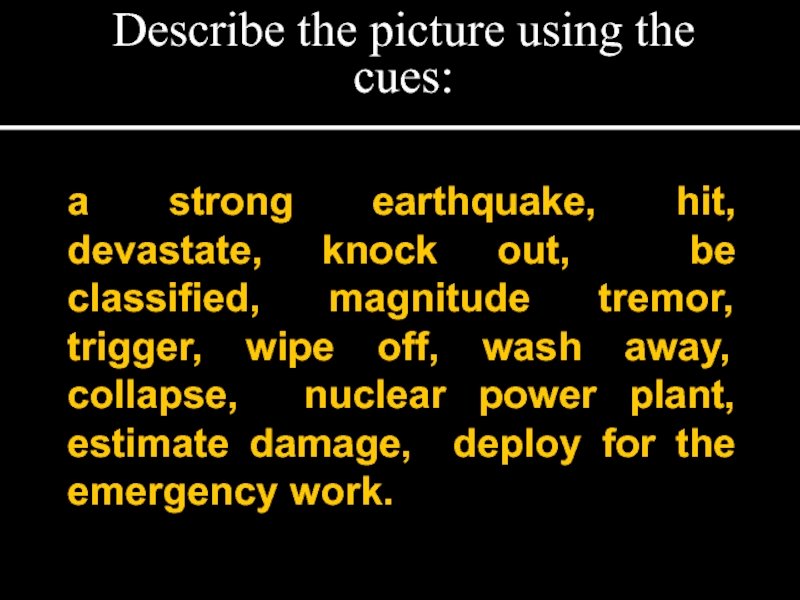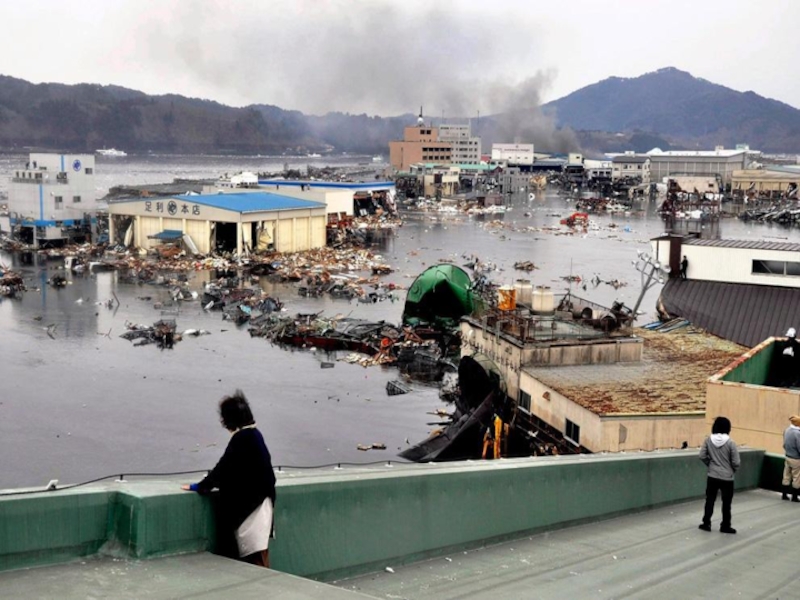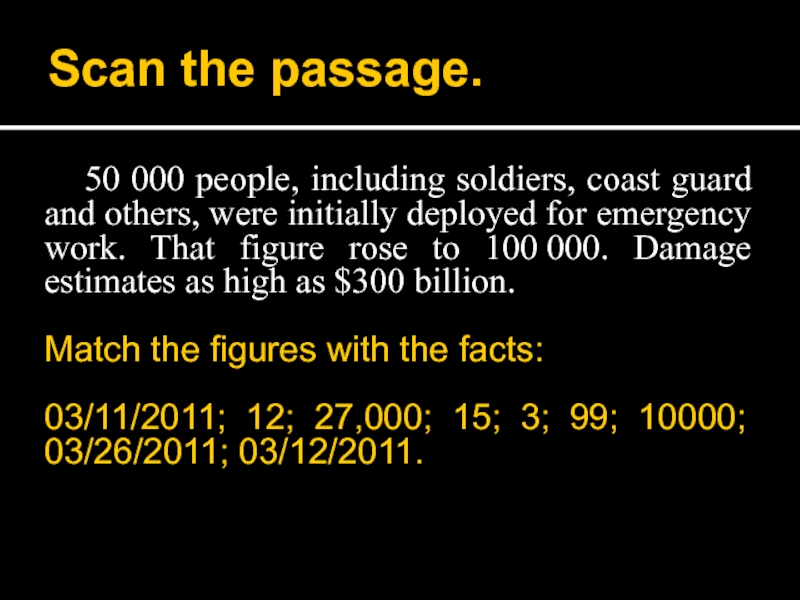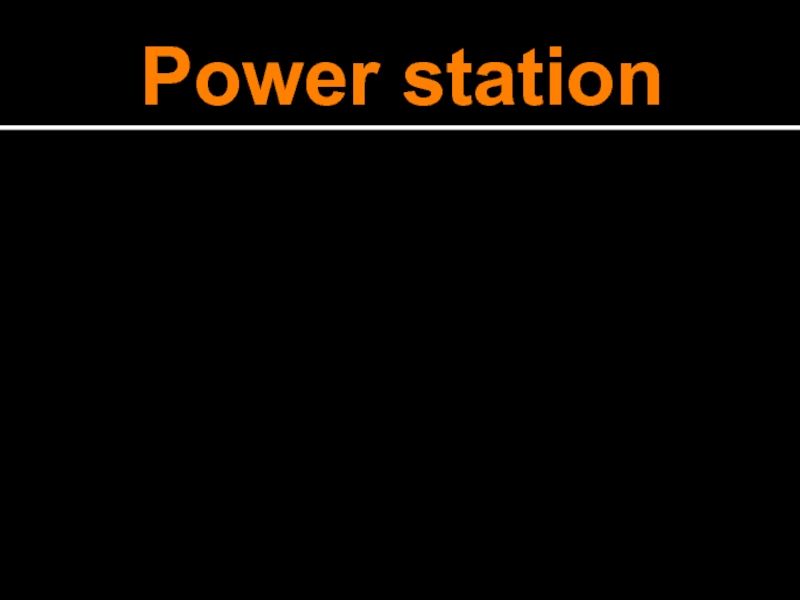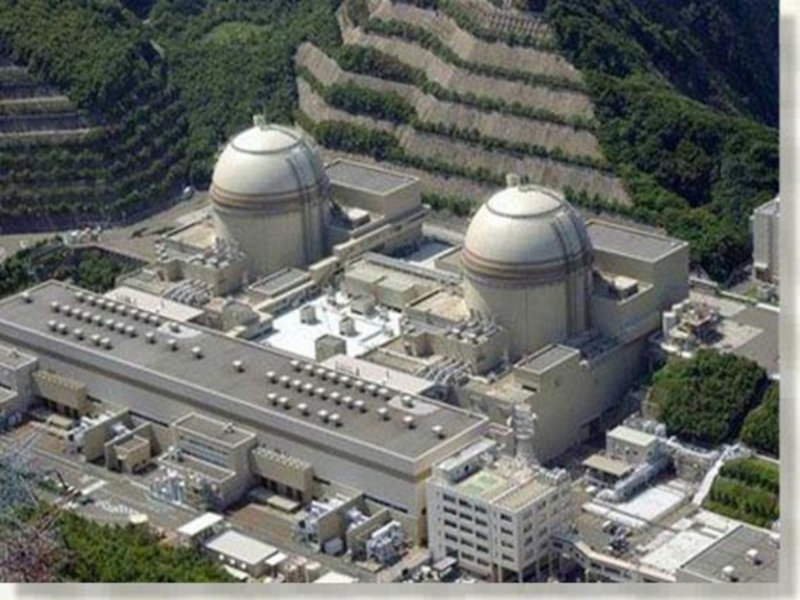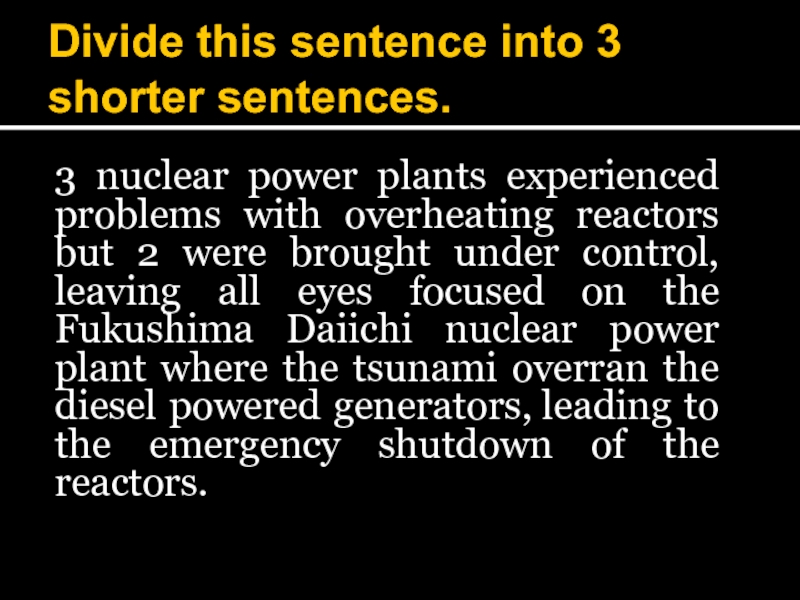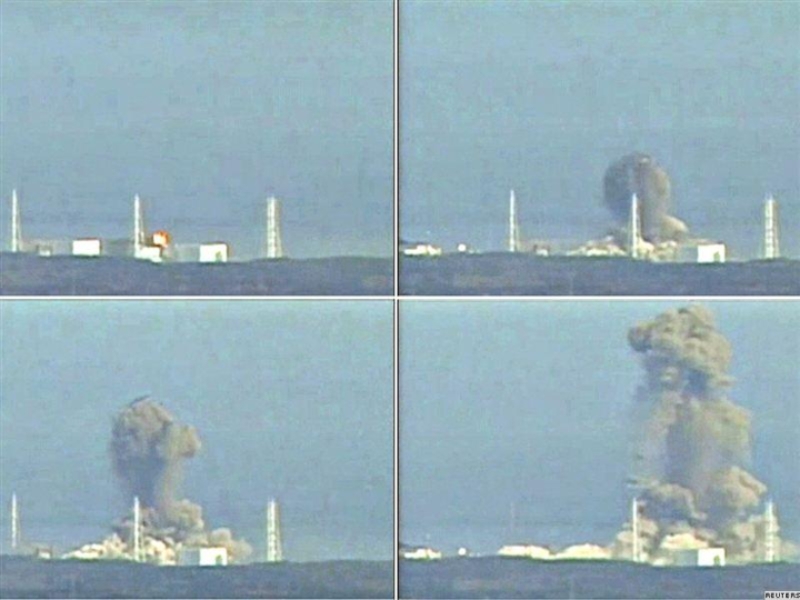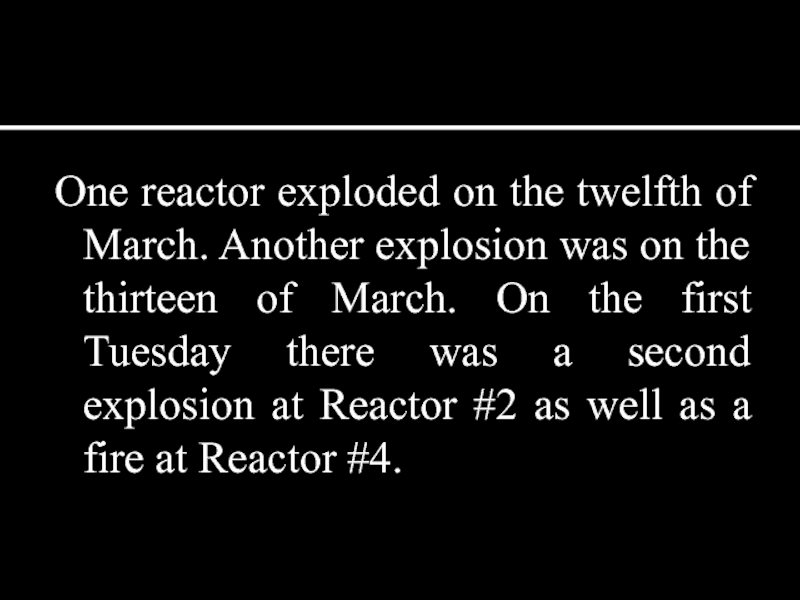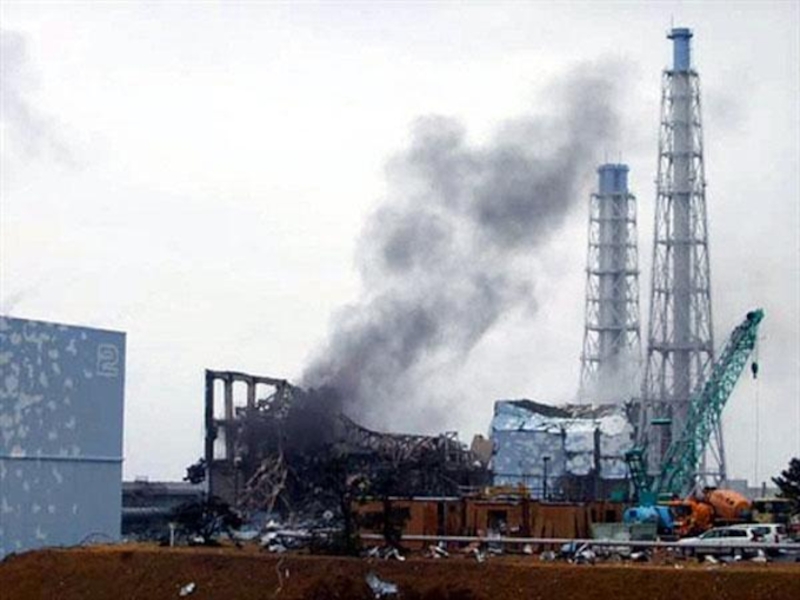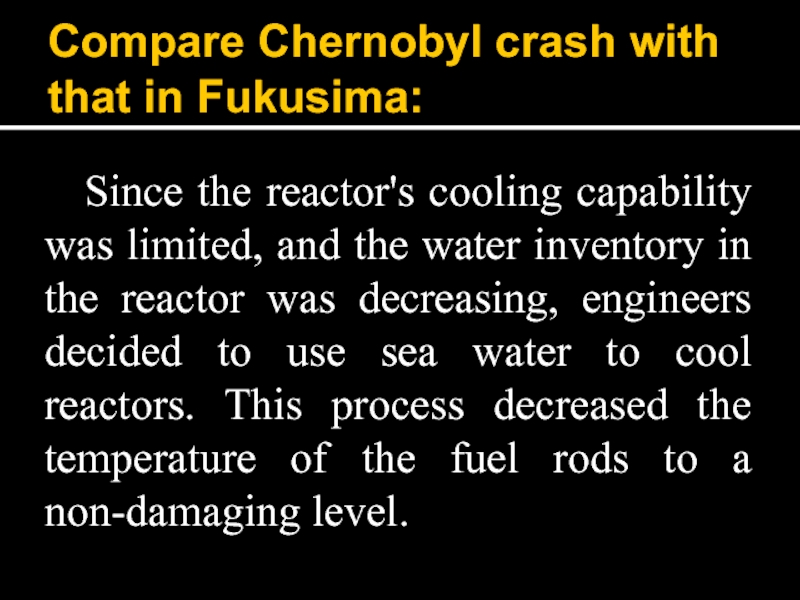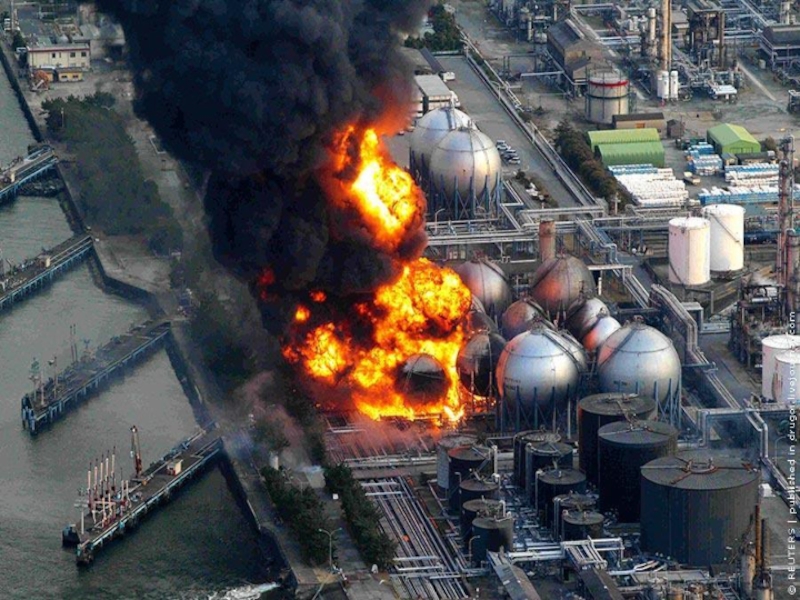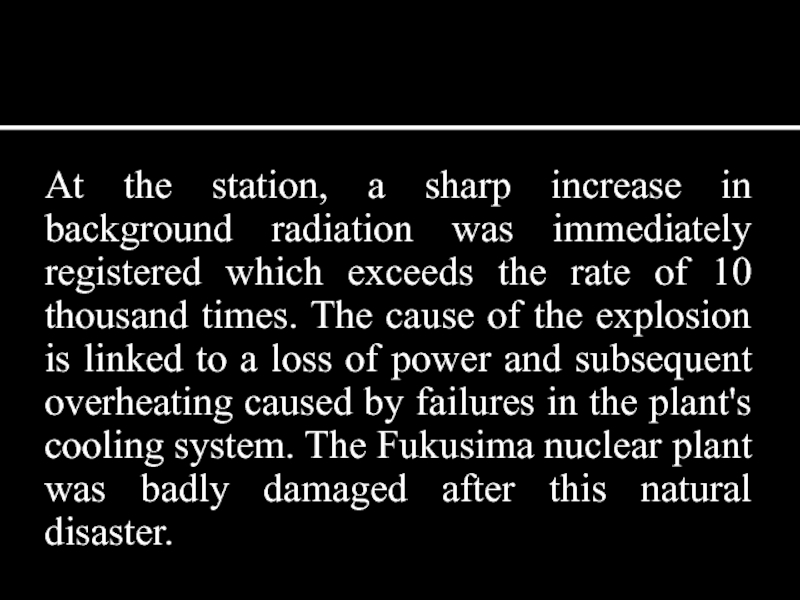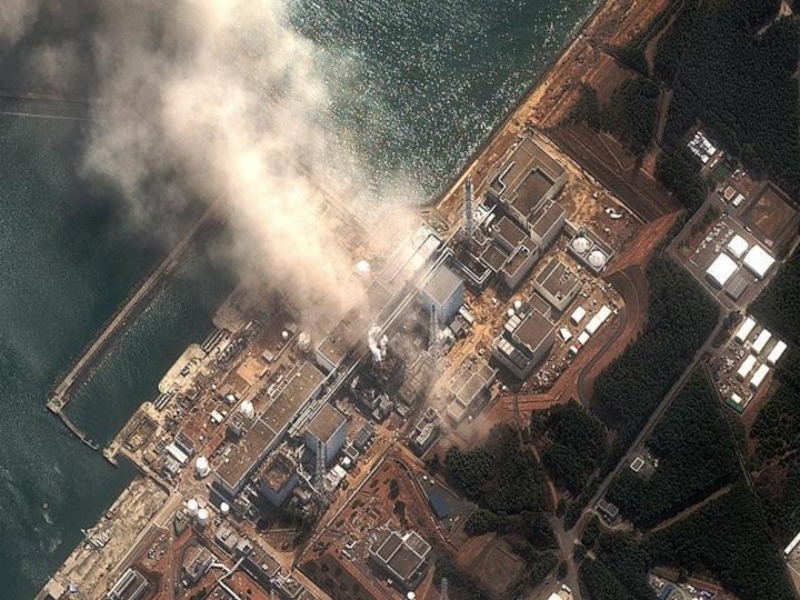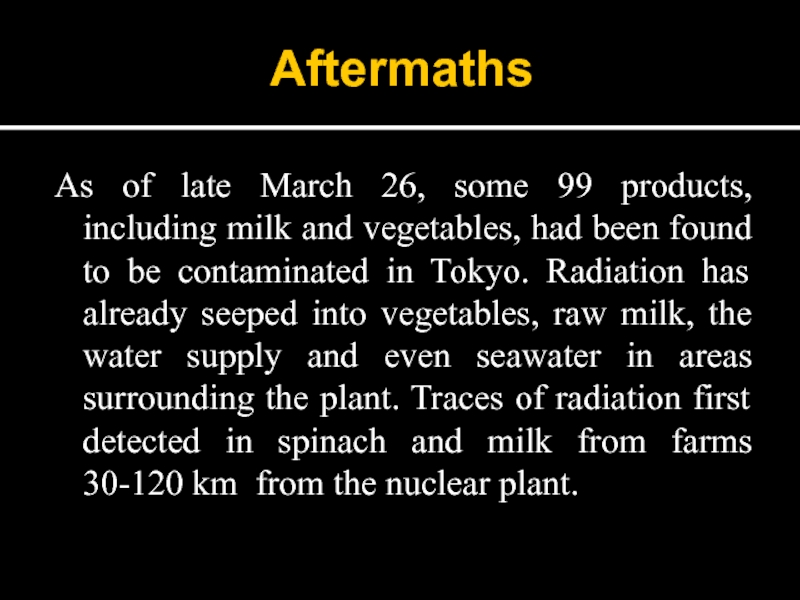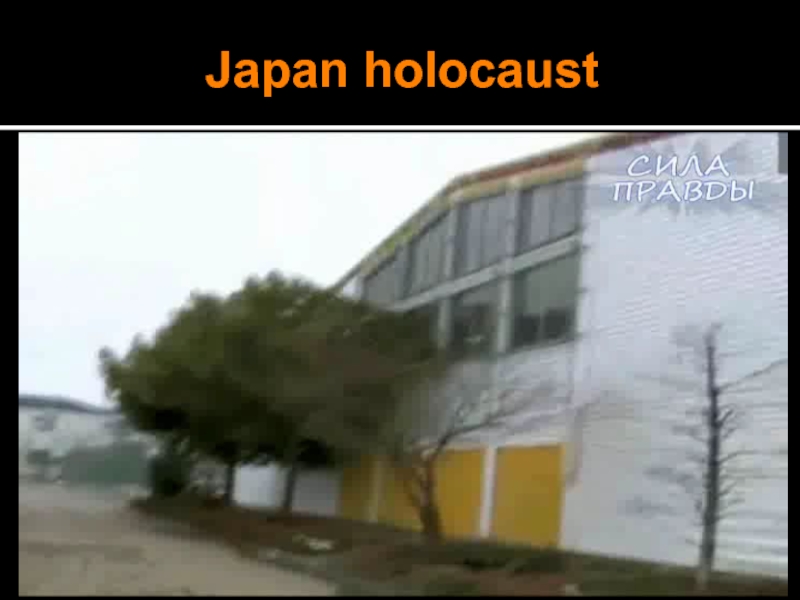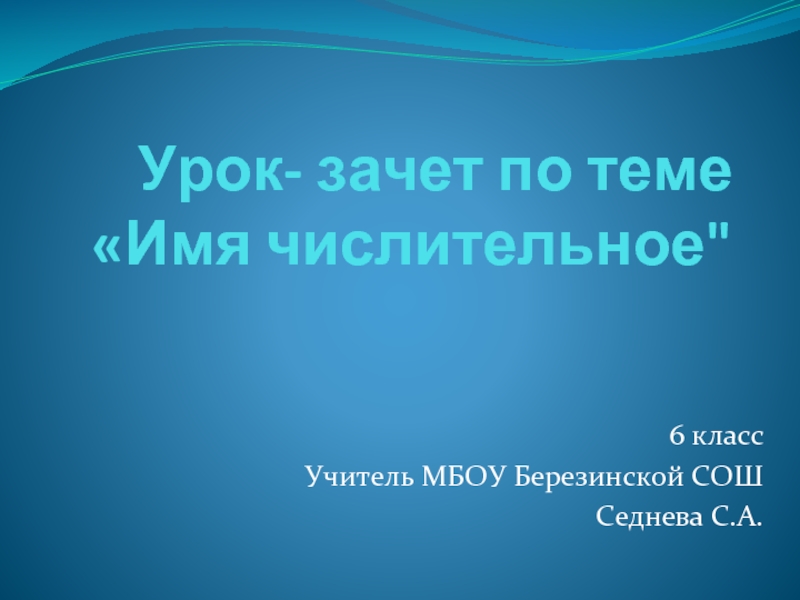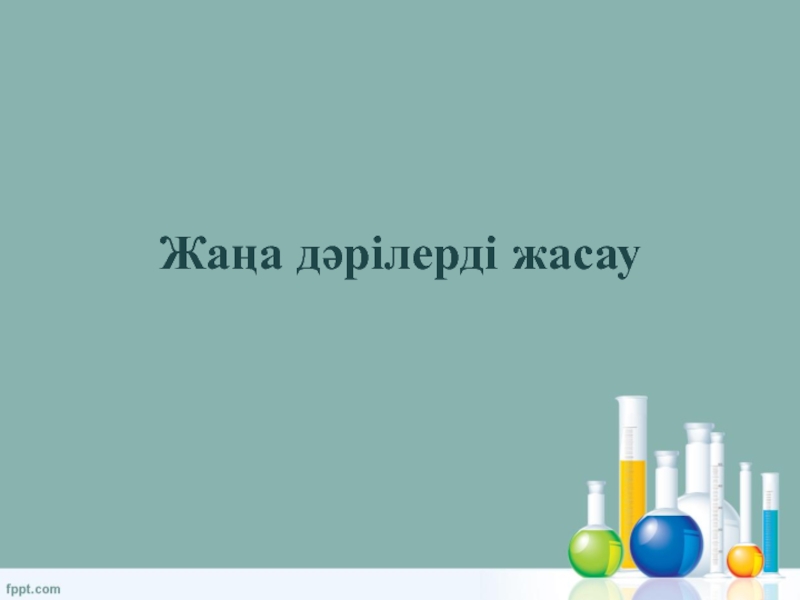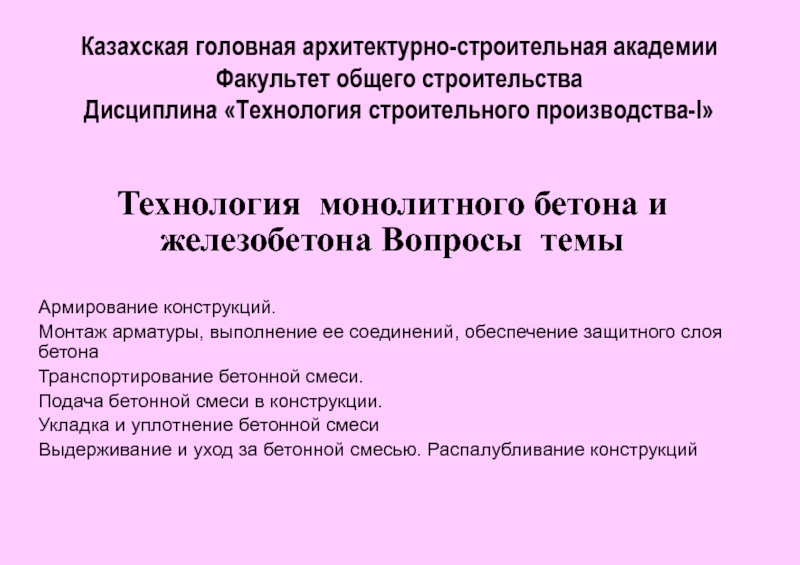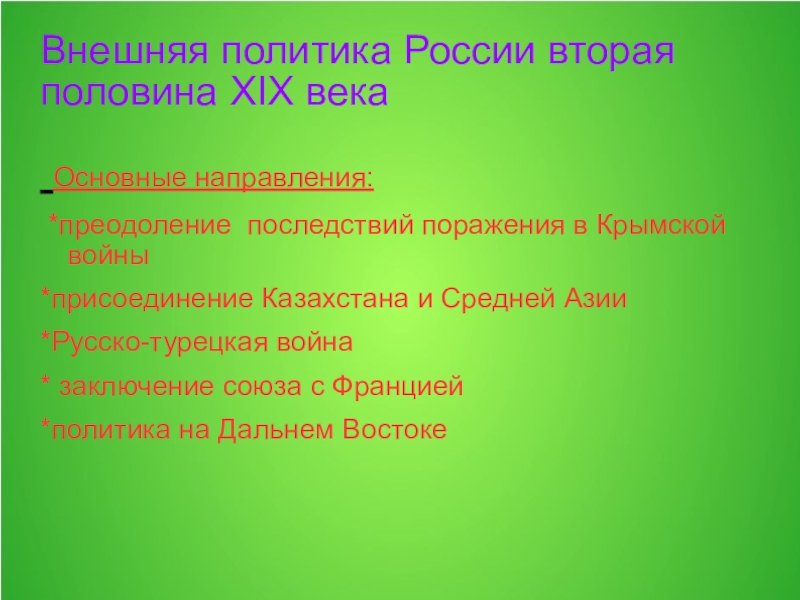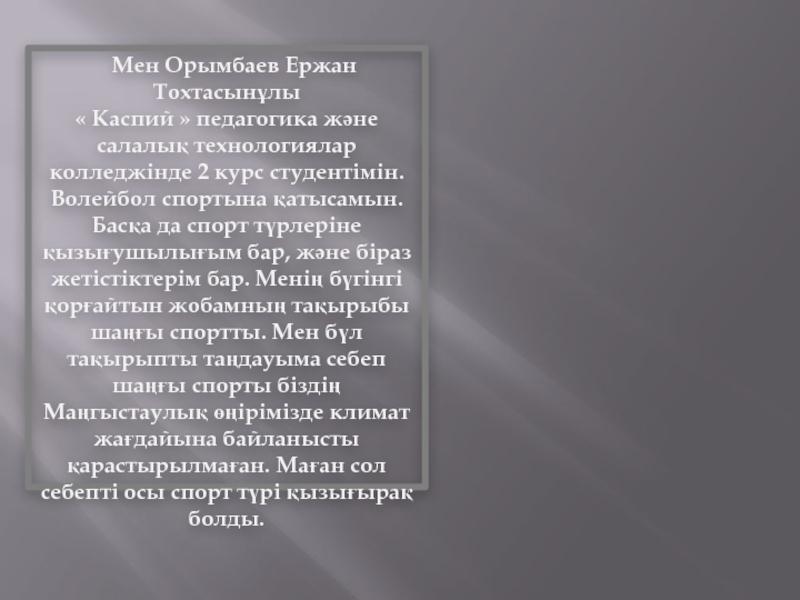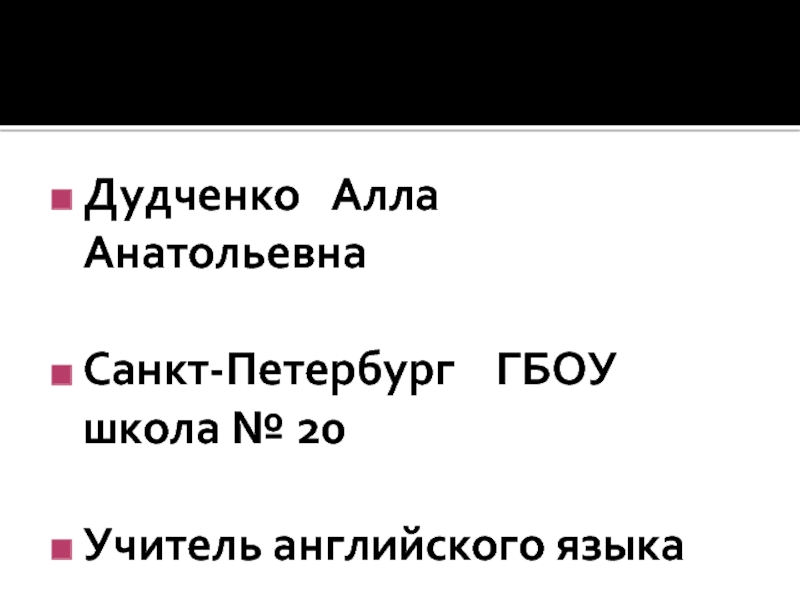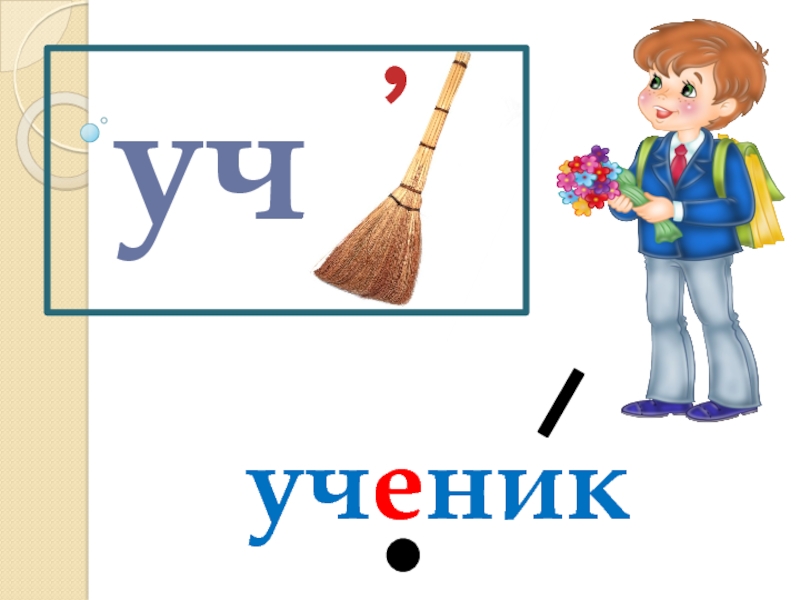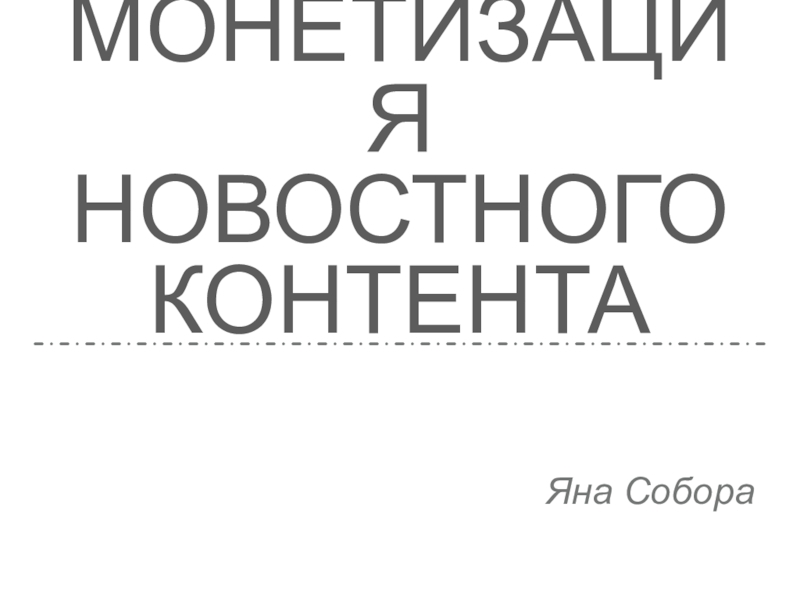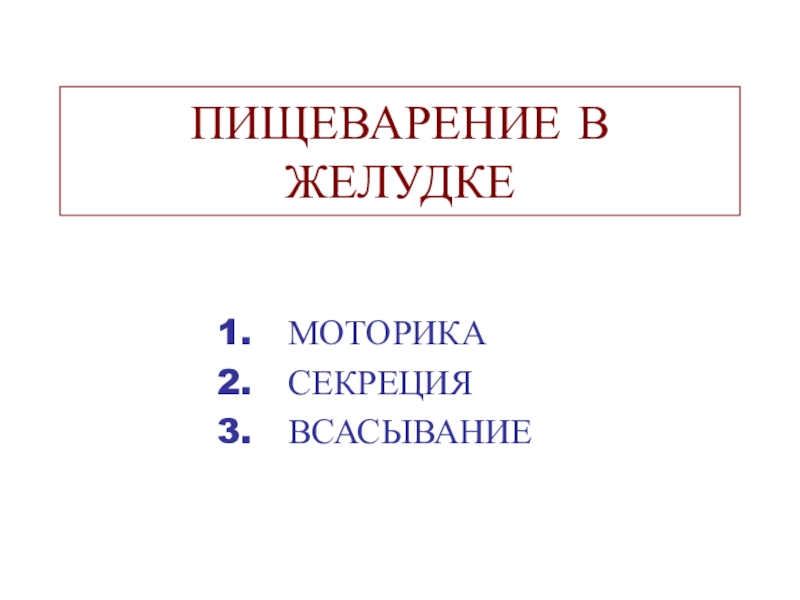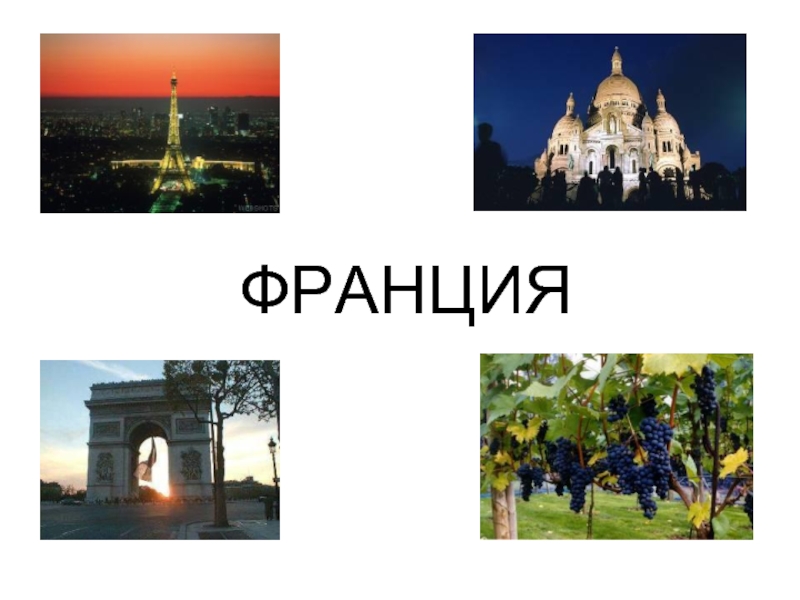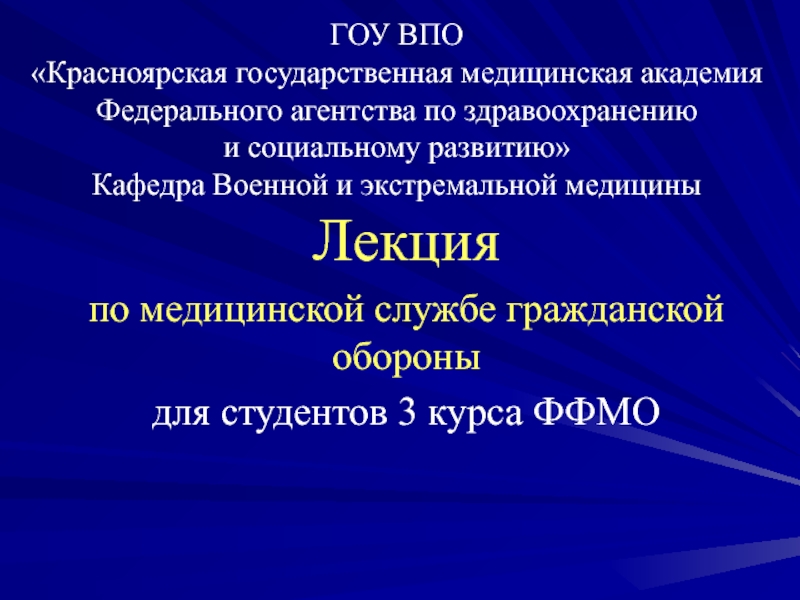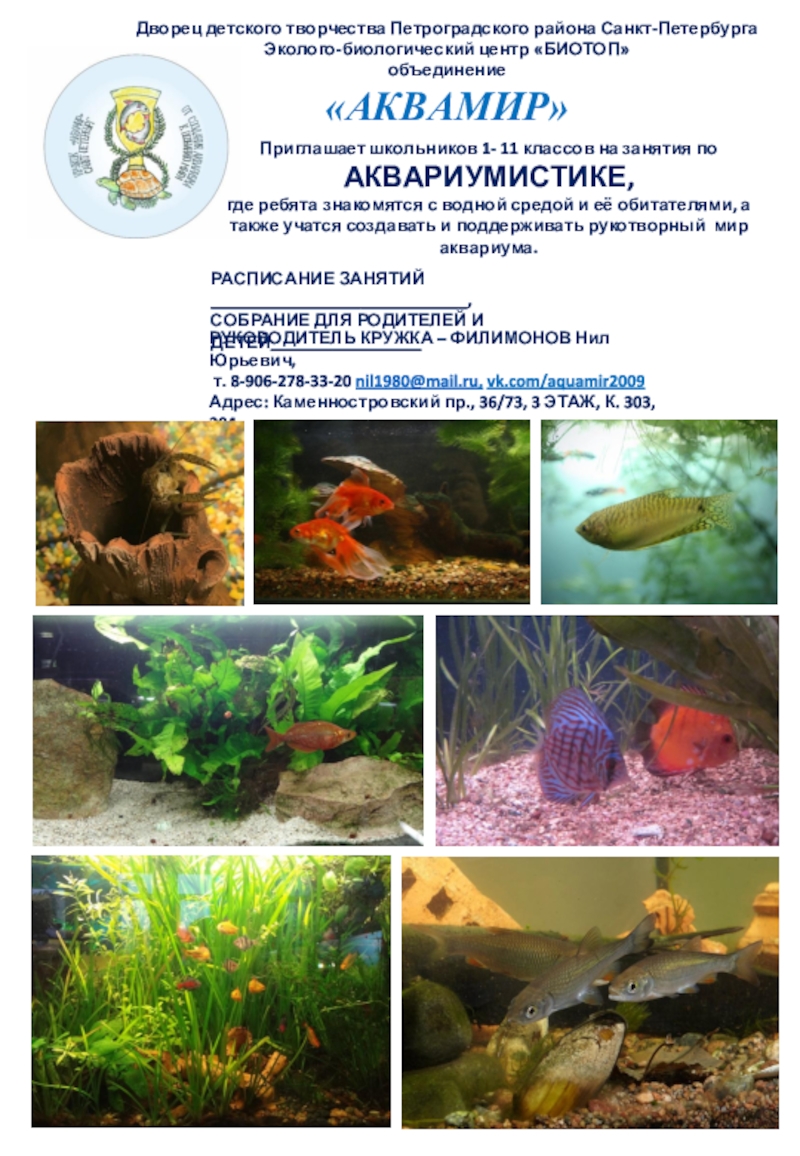Разделы презентаций
- Разное
- Английский язык
- Астрономия
- Алгебра
- Биология
- География
- Геометрия
- Детские презентации
- Информатика
- История
- Литература
- Математика
- Медицина
- Менеджмент
- Музыка
- МХК
- Немецкий язык
- ОБЖ
- Обществознание
- Окружающий мир
- Педагогика
- Русский язык
- Технология
- Физика
- Философия
- Химия
- Шаблоны, картинки для презентаций
- Экология
- Экономика
- Юриспруденция
Natural disasters
Содержание
- 1. Natural disasters
- 2. Lesson Objectivesfoster lexical and grammar skills;develop comparison-contrast strategies;activate scanning and monologue skills;mould environmental awareness.
- 3. Agendascanning and entitling the text about the
- 4. Слайд 4
- 5. We all love our native land, remarkably
- 6. Слайд 6
- 7. Find the English equivalents in the text above to the following: обрамленные, окаймленные;ленты рек;широколисты деревья;рощи;сосны;ели;липы;березы;осиныдубы.
- 8. Слайд 8
- 9. Scan the text below. Put 3 questions
- 10. Слайд 10
- 11. Use a good dictionary to learn how we should pronounce the following words:HolocaustLeukemiaCancerEarthquakeAftermathsContaminationTsunamiDevastationElimination
- 12. Слайд 12
- 13. What happened on April, 26 1986 in
- 14. Слайд 14
- 15. After the accident at the Chernobyl nuclear
- 16. Слайд 16
- 17. Match the English word combinations from the
- 18. Chernobyl holocaust
- 19. Japan holocaust
- 20. Earthquake & tsunami
- 21. On March, 11 2011 a strong earthquake
- 22. Слайд 22
- 23. Use the information to describe the slide: It
- 24. Слайд 24
- 25. Use the facts to describe the slide:The
- 26. Слайд 26
- 27. Use a good dictionary to find synonyms
- 28. Слайд 28
- 29. a strong earthquake, hit, devastate, knock out,
- 30. Слайд 30
- 31. Scan the passage. 50 000 people, including soldiers,
- 32. Power station
- 33. Слайд 33
- 34. Divide this sentence into 3 shorter sentences.
- 35. Слайд 35
- 36. One reactor exploded on the twelfth of
- 37. Слайд 37
- 38. Compare Chernobyl crash with that in Fukusima: Since
- 39. Слайд 39
- 40. At the station, a sharp increase in
- 41. Слайд 41
- 42. AftermathsAs of late March 26, some 99
- 43. Japan holocaust
- 44. Thank you for your attention!
- 45. Скачать презентанцию
Lesson Objectivesfoster lexical and grammar skills;develop comparison-contrast strategies;activate scanning and monologue skills;mould environmental awareness.
Слайды и текст этой презентации
Слайд 2Lesson Objectives
foster lexical and grammar skills;
develop comparison-contrast strategies;
activate scanning and
monologue skills;
Слайд 3Agenda
scanning and entitling the text about the nature in Belarus;
Chernobyl
catastrophe facts and figures;
watching a video report;
the earthquake and tsunami
in Japan;nuclear power station in Fucusima explosions and their aftermaths;
watching a video report.
Слайд 5We all love our native land, remarkably beautiful Belarusian nature
with its blue lakes and ribbons of rivers, edged with
thick forests. The forests are wonderful, we can find broad-leaved groves full of birches, oaks, aspens and limes, pine and fir forests.Read the text below. Entitle the slide.
Слайд 7 Find the English equivalents in the text above to
the following:
обрамленные, окаймленные;
ленты рек;
широколисты деревья;
рощи;
сосны;
ели;
липы;
березы;
осины
дубы.
Слайд 9Scan the text below. Put 3 questions to it.
The
Republic of Belarus has got over 10,000 lakes with their
varied animal and plant kingdom. Everyone knows our famous lake Naroch, Braslav lakes. The republic has also got a great number of recreational areas with endless expanses of fields, meadows and swamps. Belavezhskaya Pushtcha is one of the last and largest remaining parts of the immense primeval forest which once spread across the European Plain.Слайд 11Use a good dictionary to learn how we should pronounce
the following words:
Holocaust
Leukemia
Cancer
Earthquake
Aftermaths
Contamination
Tsunami
Devastation
Elimination
Слайд 13What happened on April, 26 1986 in Chernobyl?
Chernobyl Nuclear reactor
№ 4 crashed. As a result of it great area
of the Belarusian territory became contaminated with radioactive particles. The contamination caused a rapid raise of such incurable illnesses as cancer. A lot of people died from leukemia. Nowadays 15% of the Belarusian territory isn’t valid for consumption. The harmful effect of the tragedy according to some estimations amounts to $ 30 billion.Слайд 15 After the accident at the Chernobyl nuclear power station, a
fund was set up to undertake measures to eliminate the
aftermath of the Chernobyl catastrophe and provide social protection for the population affected. The fund finances assistance to citizens who suffered during the accident or while its aftermath was being eliminated, housing construction for citizens who were evacuated from contaminated areas, and the implementation of particular projects in the contaminated zones in Gomel and other regions.Слайд 17Match the English word combinations from the texts with the
Russian equivalents:
произошла авария в 4-м реакторе;
Чернобыльская атомная электростанция;
была заражена радиоактивными
частицами;неизлечимая болезнь;
предпринять меры;
обеспечить социальную защиту пострадавшего населения;
непригодная к использованию земля;
ликвидация последствий.
Слайд 21On March, 11 2011 a strong earthquake hit and devastated
north-east coast of Japan, knocking out electricity in Iwate prefecture.
The earthquake is classified as 12 magnitude tremor by the US Geological Survey and 9 on the Richter scale. It became the biggest earthquake in recorded Japanese history and the fifth biggest in the world .Quake hits Fukusima
Слайд 23Use the information to describe the slide:
It triggered tsunami which
killed as many as 27, 000 people. Tsunami wave was
as high as 15 meters. The worst hit was Kamaichi and the port town of Sendai as well as the nearest islands. At top speed, the tsunami travelled at 800km per hour.Слайд 25Use the facts to describe the slide:
The earthquake that hit
Japan was several times more powerful than the worst earthquake
the nuclear power plant was built for.Слайд 27Use a good dictionary to find synonyms to the highlighted
words:
Entire towns were wiped off the map. Houses, cars, ships,
buildings were washed away, roads buckled, highways collapsed, power lines tangled, railway tracks damaged. 530 000 people lost their homes. Слайд 29a strong earthquake, hit, devastate, knock out, be classified, magnitude
tremor, trigger, wipe off, wash away, collapse, nuclear power plant,
estimate damage, deploy for the emergency work.Describe the picture using the cues:
Слайд 31Scan the passage.
50 000 people, including soldiers, coast guard and
others, were initially deployed for emergency work. That figure rose
to 100 000. Damage estimates as high as $300 billion.Match the figures with the facts:
03/11/2011; 12; 27,000; 15; 3; 99; 10000; 03/26/2011; 03/12/2011.
